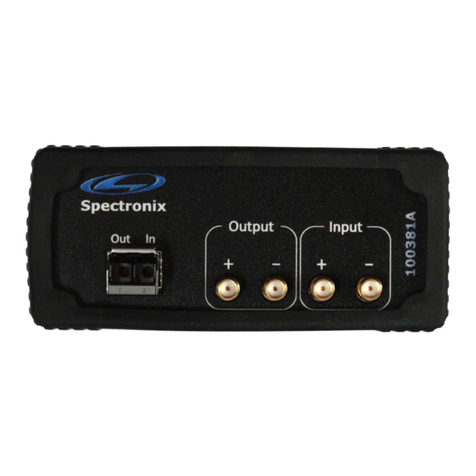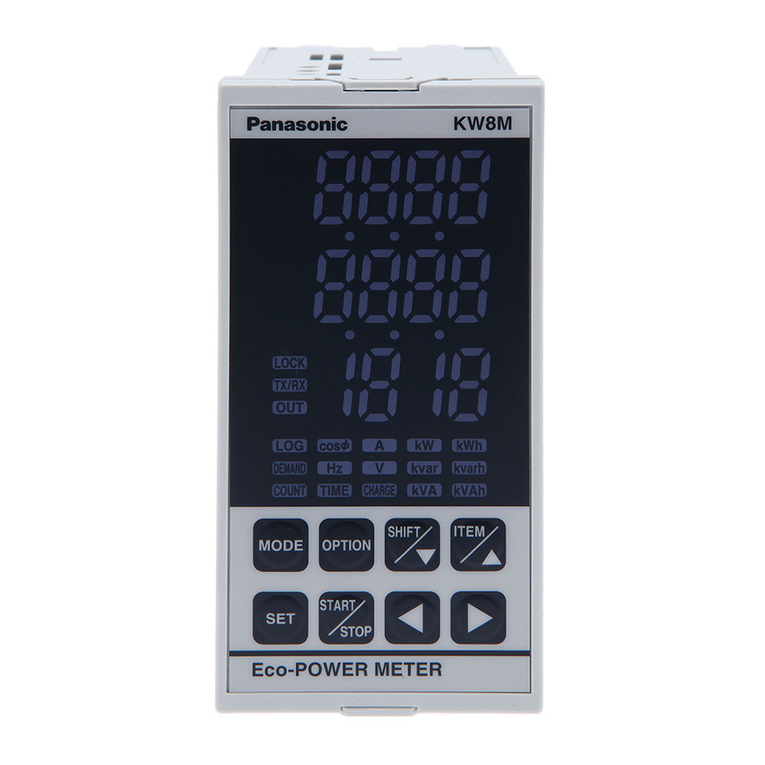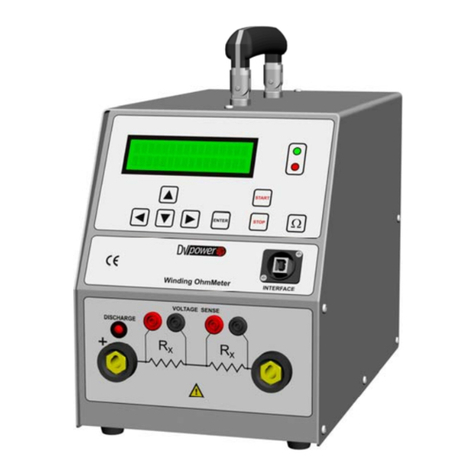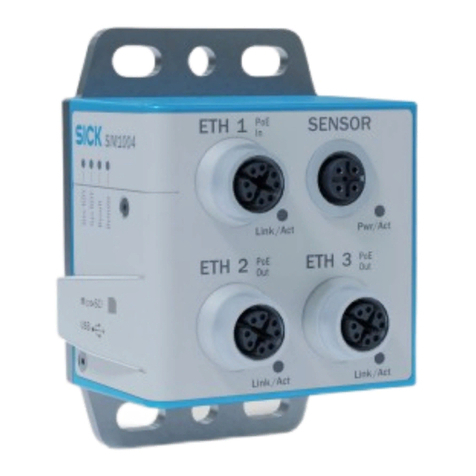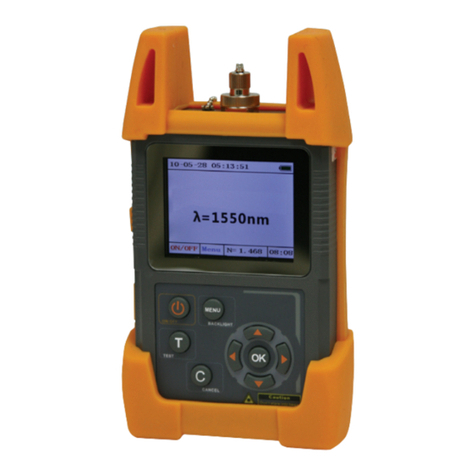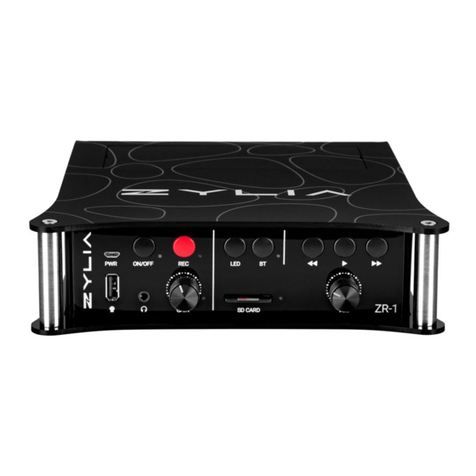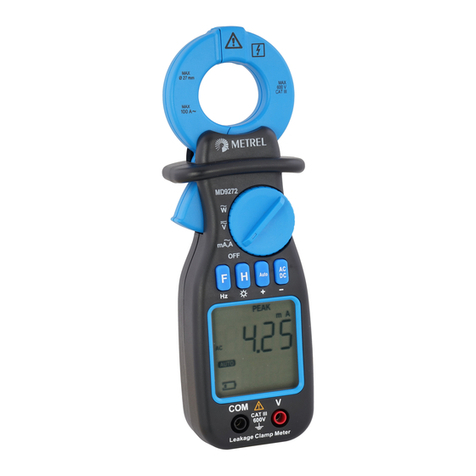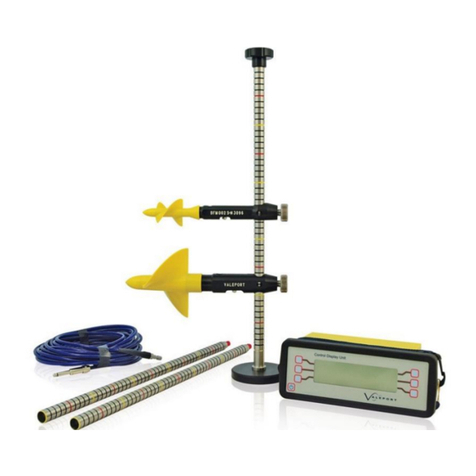Spectronic 20+ Series User manual

OPERATOR'S Instruments
I.J'9
NEI4I1

Section 2 -Installation & Operating Procedures
Setup/Installation
Environment
Make surethat your spectrophotometeris placedasfar
aspossible from anystrongmagneticor electrical
fields, or anyelectrical apparatusthat maygenerate
high-frequencyfields.
1. Selecttheappropriateglasswareandadapters.For
more information aboutglassware,adaptersandcell
holders,referto Table 4-1 onpage4-1 andTable
4-2 onpage4-2.
2. If youareconnectingthe instrumentto anAccessory
Printer, computeror chart recorder,referto Table
2-1 for information aboutcabling requirements.
The instrumentshouldbe installed in anareathatis
free of dust,corrosive gasesandseverevibrations.
In addition,thereshould be noobstructions thatcould
hinderthe flow of air underandaroundthe instrument.
Table2-1 Cabling requirementsfor SPECTRON1C1>20 series ofspectrophotometers
200+
20D
DEVICE
~20/20+
.333174 -Patch Cord .333174 -Patch Cord
Analog
Recorder .333174 -Patch Cord
.333132 -Serial Interface
Cable Kit
Notavailable
Accessory
Printer .333177 -SerialInterface
Cable
.335488-1601 (included
withSerialPrinter3~)
.333132 -Serial Interface
Cable Kit
Notavailable
ffiMPC
XT .333177 -Serial Interface
Cable
.335243 -Null Modem
Cable
OR
.333132 -Serial Interface
Cable Kit
.333132 -Serial Interface
Cable Kit
ffiMPC
AT Notavailable .333177 -Serial Interface
Cable
.335243 -Null Modem
Cable
.345002-111 -Adapter
Cable
OR
.333132 -Serial Interface
Cable Kit

3.
If you areusing eithera SPECTRONIClI20 or 20D,
referto Table 2-2 for information onfilters and
phototubesthat mustbe installed for accurate
results.
Sample Measurements
Once your instrumenthasbeensetup properly andhas
warmed up for at least 15minutes. youcanbegin
taking measurements.
Table2-2 Phototube options (SPECTRONICII 20 and
20D only)
Phototube
Cat.No.
332971**
332972
332989
Filter
Cat.No.
Nonerequired
332918*
332992*
Range
340to 600 nm
600 to 950 nm
400 to 700 nm
SPECTRONICe 20 and 20+
Notes:
.To readthe meterproperly, aligntheneedlewith its
reflection inthemirror.
.It is importantto insertthe blank andresetthe meter
to lOO%Teverytime thewavelengthis changed.
*Oruseappropriatefilter fromAccessoryFilterKit
(Cat.No. 333128)
**Includedwithinstrument Tip: The basicstepsfor taking measurementsare
highlighted inbold text inthefollowing
instructions.
4. Plug the powercord into agrounded outlet with the
appropriatevoltage.
5. Turn the PowerSwitchlZero Control clockwise and
allow the instrumentto warm up for at least 15
minutes.
Technique
I. Turn on the SPECTRONIC" 20+byturning the
PowerSwitch/Zero Control (knob ontheleft sideof
instrument)clockwise. Allow the spectrophotometer
to WanDup for atleast 15minutesto stabilize.
2. After the wannup period, setthe desired
wavelength with theWavelength Control Knob.
3. Setthe fflter lever to the appropriateposition for
the selectedwavelength(notrequired for
SPECTRONIC" 20).4.
Adjust the meter to O%T with the Power
Switch/Zero Control (knob onthe front left sideof
instrument).Make surethe samplecompartmentis
emptyandthe coveris closed.
5. Fill a cleancell with water(or blank solution) and
wipe the cell with a tissuetoremoveliquid droplets,
dustandfingerprints.6.
Place the cell in the sample compartment and
align theguide mark onthe cell with theguide mark
atthe frontof the samplecompartment.Pressthe
cell &!:mlyinto thesamplecompartmentandclose
thelid.7.
Adjust the meter to lOO%T with the
Transmittance!AbsorbanceControl (knob onthe
front right sideof instrument).
8. Removethe cell from thesamplecompartmentand
emptythewater.9.
Rinsethe cell twice with smallvolumesof the
solutionto be measuredandfill it with the solution.
Successfuluseof your spectrophotometerdependson
the consistentuseof correct laboratoryproceduresand
analyticaltechniques.To minimize problems,follow
thesesimple rules:
.Keep all solutionsfree of bubbles.
.Make sure that all sampleholders are at leasthalf
full.
.Use thesamecuvettefor bothsampleandblank
measurements.
.Use squarecuvettes(Cat. No. 331709) with Holder
(Cat. No. 333176) for greateraccuracy.
.Make sure thatthe mark (fiducial line) onthe test
tubealigns with the mark onthe adaptertoward the
front of the instrument.
.During extendedoperation atafixed wavelength,
check from time to time for IOO%Tdrift. Possible
causesof drift are listed in Table 3-1 in the
Maintenance section.
.Use cleantesttubesanddo nottouchthe testtubes
below the fiducial line.

Installation & Operating Procedures
SPECTRONIC 2ar series
.Change in wavelength
It is importantto insertthe blank and resetthe
displayto 100%T or O.OAeverytime the
wavelengthis changed.
Tip: The basic stepsfor taking measurementsare
highlighted inbold text in the following
instructions.
10.
Wipe the cell with a tissueandinsert the cell into
the sample compartment. Align theguide marks
andclosethe lid.
II. Read the appropriate value (%T or A) from the
meter.12.
Removethe cell from thesamplecompartmentand
repeatsteps9 through II for anyremaining
samplesolutions.13.
When all measurementsarecompleted,turnoff the
spectrophotometerby turning the Power
SwitchlZero Control counterclockwise until it
clicks. TransmittanceandAbsorbance
SPECTRONIC~ 200 and 200+
Notes:
.Flashing display
A flashing display indicates that the reading is out of
range and the I OO%T/OA control must be adjusted.
This adjustment controls an optical occluder which
regulates the amount of light passing through the
sample.
In %Tmode:
A reading greater than 200%T will cause the display
to flash.
-If the flashing reading is -1999, turn the
100%T/OA control clockwise until the display
operates normally.
-If the flashing reading is +1999. turn the
lOO%T/OA control counterclockwise until the
display operates normally.
In absorbancemode:
A reading greater than 2A will cause the display to
flash.
-If the flashing reading is -1999, turn the
100%T/OA control counterclockwise until the
display operates normally.
-If the flashing reading is +1999. turn the
100%T/OA control clockwise until the display
operates normally.
1. Turn onthe insn-umentbyturning the Power Switch
(knob ontheleft sideof insn-ument)clockwise.
Allow the spectrophotometerto warm up for at least
15minutesto stabilize.
2. After the warmup period, setthe desired
wavelength with theWavelength Control Knob.
3. Setthe ffiter lever to theappropriate position for
the selectedwavelength(not required for
SPECTRONICCB>20D).4.
Adjust the displayto O%Twith theZero Control
(knob onthe front left sideof the insn-ument).Make
surethatthesamplecompartmentis emptyandthe
coveris closed.
5. Setthe display mooe to TRANSMI1TANCE or
ABSORBANCE bypressingtheMODE control key
until the appropriatelED is lit.
6. Fill a cleancell with water (or anotherblank
solution) andwipe the cell with atissueto remove
liquid droplets,dustandfingerprints.
7. Place the cell in the sample compartment and
aligntheguide mark onthe cell with theguide mark
atthe frontof the samplecompartment.Pressthe
cell firmly into the samplecompartmentandclose
thelid.
8. Adjust the display to lOO%T or O.OAwith the
Transmittance/AbsorbanceControl (knob onthe
right sideof insn-ument).
9. Removethe cell from the samplecompartmentand
emptythewater.
10. Rinsethe cell twice with smallvolumesof the
solutionto be measuredandfill it with the
solution.
It mayrequire severalcompleteturns ofthe
lOOo/fiTcontrolto return to the properrange.

Installation & Operating Procedures SPECTRONIC 2~ series
8. Removethe cell from the samplecompartmentand
repeatsteps6 and 7 for eachof thesamples.9.
When all measurementsarecompleted,turn off the
specb"ophotometerby turning the Power Switch
counterclockwise until it clicks.
ConcentrationmeasurementsusingFACTORmode
II. Wipethecellwithatissueandinsertthe cellinto
thesamplecompartment.Aligntheguidemarks
andclosethelid.12.
Readtheappropriate value(%T or A) fromthe
display.13.
Removethecellfromthesamplecompartmentand
repeatsteps10through12for anyremaining
samplesolutions.14.
Whenallmeasurementsarecompleted,turnoffthe
spectrophotometerbyturningthePowerSwitch
counterclockwiseuntilitclicks. Note: Refer to Appendix A for more information
abouttheFACTOR mode.
Concentrationmeasurementsusing
CONCENTRATIONmode
I. Follow steps I through 9of theTransmittance and
Absorbance procedure(using theabsorbance
mode).
2. Rinsethe cell twice with small volumesof the
standardsolutionof known concentrationandfill the
cell with thesolution. Wipe the cell with atissueand
insert tbe ceOin the sample compartment. Align
theguide marksandclosethelid.
3. Pressthe MODE control key until thelED beside
"concentration"is lit.
4. Pressthe INCREASE or DECREASE key until
the displayedvaluematchesthe concentrationof the
standardsolution.
1. Determine the factor valueby following steps I
through4of theprocedurefor "Concentrationmode"
above.
2. Pressthe MODE control key until thelED beside
"factor" is lit.
3. Pressthe INCREASE or DECREASE key until
the desiredfactor is displayed(a value between
0.100 and 1000).4.
Pressthe MODE control key to selectthe
CONCENTRAllON mode.
5. Rinseand fill the cell with the samplesolutionof
unknownconcentration.Wipe the cell with atissue
andinsert the ceOin the sample compartment.6.
Read the concentration of thesampledirectly from
thedisplay.
7. Removethe cell from thesamplecompartmentand
repeatsteps5 and6 for eachof the samples.
8. When all measurementsarecompleted.turn off the
spectrophotometerbyturning the Power Switch
counterclockwise until it clicks.
Note: limits are0to1999.
Printing [SPECTRONIC«> 200 and 200+ only]
Normally, the spectrophotometeris in the print mode
when it is first turned onandoperatesata rateof 1200
baud. A rangeof other transmissionrates,from 110to
9600 baud,mayalsobe accommodated.
5. To detenninethe factor,pressthe MODE control
keyuntil the LED besidethe "Factor" is lit. Readand
record the factor value.PresstheMODE control key
until theLED beside"Concentration"is lit.
6, Removethe standardsolutionandrinse andfill the
cell with the sample solutionof unknown
concentration.Wipe the cell with atissueandinsert
the cell in the sample compartment.
7. Read the concentration of thesampledirectly from
thedisplay.

SPECTRONIC 2~ series Installation & Operating Procedures
TousetheAccessoryPrinter: Dataformat
Data from the instrumentto a printer or otherremote
device is sentasshowninthefollowing example:
I. SetthebaudrateontheAccessoryPrinterto 1200
(RefertotheAccessoryPrinterOperator'sManual,
Cat.No.335488-10001).
2. PushthePRINTkeyforaprintout.
Remote operation [SPECTRONICI8>200 and
200+ only]
Commandset
574NM -01.5 A CR & LF
3 DK3rr~~-;J -l~~~:E
WVL THEN "NM" RETURN AND LINE
SPACE FEED
DATATYPE
SK3N (A,T,C,OR F)
(" BLANK, OR +) SPACE
DATA(3 DIGrrS,
PLUS A DECIMAL
POINT)
An externaldevice maysendthecommandslisted in
Table 2-4 to the SPECTRONICZ>20D and 20D+
spectrophotometer.Table 2-3 listsconventionsfor
serial I/O data.
Table2-3 Serial/fa dataconventions
Wordlength
Parity
Echo
Tenninators
8 databits, I stopbit; most
significant bit setto 0
None
None
Ignores all carriage return or line
feedcharacterssentbyexternal
device (exceptfor CR in Auto Baud
Ratemode). TransmitsASCn
CR/LF aftereverydataline.
Table2-4 Commandsfor remoteoperationofSPECTRONICI120D+spectrophotometers
Function
ie
toabsorbance
ie
totransmittance
Setthe datamodeto concentration
Setthe datamodeto factor
Resetthe spectrophotometerto initial power-up conornon
Setthe spectrophotometer'sbaud rateto therateusedby a computer
connectedto the serial output port

Baudratesenings Note:
.The PRINT line is nonnal1y"high." The PRINT line
canbe set"low" bypressingthe PRINT button.
.For SPECTRONICCXl20Dmodels,youcansetthe
PRINT line "low" by pressingthe pushbuttononthe
SerialInterfaceCable (Cat. No. 333177) while
turning onthespectrophotometer.
Data is sentto the printer (or received from an external
device) ata rateof 1200baud if the instrumentis
turned on with the PRINT line "high" (atlogic I,
greaterthan2.0 VDC). Other baudrates maybe
selectedwhenthe spectrophotometeris connectedto a
computer.Theseratesinclude 110,300, 1200,2400,
4800 and 9600 baud.
If the spectrophotometeris turned on with the PRINT
line "low" (logic O.lessthan0.8 VDC). it adjuststothe
computer'sbaud rate upon receiptof either the letter
"E" or acarriage return (CR) characterfrom the
computer.

NOTE
This operator's manualcontains information andinstructions for Spectronic Instruments
SPECTRONIC'J 20+and 20D+spectrophotometersthatwerebelieved accurateatthetime this
manualwaswritten. However,aspart of SpectronicInstruments'on-going program of product
development,the specificationsandoperating instructions for thesespectrophotometersmaybe
modified or changedasneeded.Spectronic Instrumentsreservesthe right to changesuchoperating
instructions andspecifications. Under nocircumstancesshall Spectronic Instrumentsbe obligated to
notify purchasersof anyfuturechangesin eitherthis operator'smanual or anyotherinstructions or
specificationsrelating tothe SPECTRONIC 20seriesspectrophotometers,nor shallSpectronic
Instrumentsbe liable in anyway for its failure to notify purchasersof suchchanges.
FCC COMPLIANCE STATEMENT FORU.S.A. USERS
This equipment generates,uses,andcanradiateradio frequencyenergy,andif notinstalled andused
in accordancewith the instruction manual,maycauseinterferenceto radio communications. It has
beentestedandfound to comply with the limits for Class A computing device pursuantto SubpartJof
Part 15of FCC Rules,which aredesignedto provide reasonableprotection againstsuchinterference
whenoperatedin a commercialenvironment. Operationof this equipmentin aresidential areais
likely to causeinterference in which casethe userathis own expensewill berequired to take
whatevermeasuresmaybe required to correcttheinterference.
GENERAL SAFETY NOTES USEDIN mlS MANUAL
~
This symbol alertsyouto important infonnation aboutusing theinstt"Ument.Be sure toreadand foIlow
the associatedinstt"UctionscarefuIly.
~
This symbol alertsyouto potential electrical hazards.Be surethatonlyqualified personsperfonn the
relatedprocedures.
~
This symbol alertsyouto hotsurfaces.Be sureto readand follow the associatedinstructions carefully.
Copyright @1997,Spectronic Instruments,Inc.
All rightsreserved.
SPECTRONIC is aregisteredtrademarkof Spectronic Instruments,Inc.
All otherbrand and productnamesaretrademarksorregisteredtrademarks
of theirrespectivecompanies.

NEW PRODUCTWARRANTY
Spectronic Instrumentswarrant~s the SPECTRONIC@20+seriesof spectrophotometersagainst
defectsin material and workmaAShipfor aperiod of three (3) yearsfrom the date of delivery.
Relatedaccessoriesare warran~against defects in material and workmanship for a period of one
(1) year from the date of delivery.
This warranty covers all parts (exceptthosespecified below) andlabor, andappliesonly to
equipmentwhich hasbeeninstalledandoperatedin accordancewith the operator's instruction
manualand which hasbeenservicedonly byauthorized SpectronicInstrumentsdealersor service
personnel.This warranty does not applyto equipmentandaccessoriesthat have beenmodified or
tamperedwith in anyway, misused,or damagedby accident,neglect, or conditions beyond
SpectronicInstruments'control.
This warranty does not applyto lamps,glassware,andsimilar expendablecomponents.However,
suchparts andcomponentsmaybewarranted by their manufacturer.
Spectronic Instruments is not responsibleunder this warranty for loss in operatingperfonnance
due to environmentalconditions.
THIS WARRANTY IS IN LIEU OF ALL WARRANTIES EXPRESSED, IMPLIED, OR
STATUTORY, INCLUDING, BUT NOT LIMITED TO, WARRANTIES OFFITNESS FOR A
PARTICULAR PURPOSEOR MERCHANTABILITY OR OTHERWISE, andstatesSpectronic
Instruments'entire andexclusive liability andtheCustomer'sexclusiveremedyfor anyclaim in
connectionwith the saleor furnishing of services,goods, or parts, their design,suitability for use,
installation, or operations. SpectronicInstruments will in no event beliable for anydirect,
indirect, special,or consequentialdamages,whatsoever,including lossof goodwill, whether
grounded in tort (including negligence),strict liability or contract, andSpectronic Instruments'
liability underno circumstanceswill exceedthe contract price for the goods and/orservicesfor
which liability isclaimed.
II

Contents
1-1
1-2
1-6
1-6
Section 1 -Introduction.Environmental and electrical requirementsOperating features of the SPECTRONIC@ 20+ spectrophotometer.Operating features of the SPECTRONIC@ 200+ spectrophotometer.
2-12-12-1
2-2
2-2
2-4
2-5
Section 2 -Installation & Operating Procedures.EnvironmentSetup/InstallationTechniqueSample Measurements.Printing.Remote operation.
3-1
3-1
3-2
3-2
3-3
3-4
3-6
3-6
Section 3 -Maintenance.Lamp Replacement.Cleaning the sample compartment .
Wavelength Calibration Check.Photometric linearity checkReplacing phototubesService ProcedureTroubleshooting
Section 4-Accessories.
A-1
A-1
A-1
A-1
A-2
AppendixA-ChoosingaReadoutMode..Transmittance Mode.Absorbance Mode.Concentration Mode.Concentration-Factor-Check Feature.
Appendix B -Optical Diagram
III

Section 1 -Introduction
summarizesthespecifications for thetwo current
models in the SPECTRONICBI20 series.
TheSPECTRONI~ 20seriesofspectrophotometers
isoneofthemostwidelyusedlaboratoryinstruments.
Overtheyears,theserieshasbeenimprovedandnow
includestheSPECTRONI~ 20+andthe
SPECTRONIC@200+. Operational proceduresfor the SPECTRONICII 20 and
20D spectrophotometersareincluded in this manual.
This sectiondescribesthesetwo latestinstrumentsand
their basic operating features.The table below
Table1-1 Specificationsfor SPECl'RONlCi>20+and SPECl'RONlCi>20D+ Spectrophotometers
SPECTRONIC" 20D+
SPECTRONIC' 20+
SPECIFICAnONS
-
20nm
Specb'alslit width
340to 950nm
Wavelen~~
:t:2.5nmnear525nm
Wavelengthaccur~~y
LED
%T, A, C, Factor,
Wavelenj!;th-
Display Meter
51/2"mirrored scale
linear %T, non-linear A
0to 100%T
0to 1.95A
0to 1999C
(0.1 to 1000Factor)
0 to lOO%T
Oto2A
Photomenicrange
j:2%T
Photometricacc~~-
:to.5%T
Photometricnoise
O.5%T* from 340nm to 95Onm
--
Sb'ayr~iant energy- 1.0VDC nominalat100%T
RS-232Cseri&l!9port
0VDC nominal at lOO%T
Accessoryoutput
!
OO/115.v.50/60Hz; 22Q/240V. 50/60Hz
~owerreq~e_nts
~5:'
W (41.3cm)x 8.5~21.6cm) x 1?:5"D (34.3cm)
Dimensions
-.
~et:
181bs.(~g)
~g~t
* When measured with ap(X"opriateaccessoryfilter installed (AccessoryFilter Kit 333129)

SPECTRONIC 20'" series
Introduction
Environmental and electrical requirements Storage environment
The SPECTRONICII 20seriesof spectrophotometers
hasbeendesignedto operate undertheenvironmental
andelectrical r'equirementslistedbelow.
-40°F to 140°F (-40°C to 60°C)
Relative humidity notto exceed60%
Allow instrumentto adjustto roomtemperaturefor 24
hours aftertaking it outof storage.
Line voltages Altitude
Catalog#
333182-000
333182-002
333182-004
333182-005
Linevoltage
115VAC
220VAC
240VAC
l00VAC
Frequency Current
60Hz 0.9 Amp
50/60Hz 0.5Amp
50/60Hz 0.5Amp
50/60Hz 0.9Amp
Frombelowsealevelto 2000meters(6562feet)
For indooruseonly
333183-000
333183-002
333183-004
333183-005
115VAC
220VAC
240VAC
lOOVAC
60Hz
SO/60Hz
SO/60Hz
SO/60Hz
1.0Amp
0.5 Amp
0.5Amp
1.0Amp
Installation CategoryII
PollutionDegree2
Operating environment
The instrument meetsthe specifications onthe previous
pageunderthe following conditions aftera 30-minute
warm-upperiod.
Your insb"umentpackageincludes:
.SPECTRONICC8>20+(Cat. No. 333182) or
SPECTRONICC8>200+ (Cat. No. 333183)
spectrophotometer
.SPECTRONIC'1 20+SeriesSpectrophotometers
Operator's Manual (Cat. No. 333182-10001)
.Box of 12 testtubecuvettes(Cat. No. 331780)
.Oust cover(Cat.No. 332961-149)
.Y2" Adapter (Cat.No. 333178)
.1/16" Allen wrench (Cat. No. 332260-174) for
interchangingtest-tubeadapters
Relative humiditl'
20% to 80%
20% to 70%
20% to 60%
20% to 50%
Ambienttemperature
50°F to75°F (15°C to 24°C)
76°F to 85°F (25°C to 29°C)
86°F to 95°F (30°C to 35°C)
96°F to 105°F (36°C to 40°C)
Temperatureshouldbe maintainedat:t4of (:t2°C).
Relative humidity shouldbe maintainedto :t5%.
"

meterspectrophotometerwith awavelengthrangeof
340 nmto 950 nm. The nominal spectralslit width of
20 nmis constantovertheentire range.
The SPECTRONICOII20+spectrophotometer (Cat.
Nos. 333182-000, 333182-02, 333182-04, 333182-05
or 333182-07), shownin Figure I-I, is a single-beam
2
3
//1
I:.
-::-- ...
,.'
4
""6
5
Figure I-I SPECTRONIC 20+spectrophotometer
KEY
1. Sample compartment
2. Pilot lamp
3. Wavelength control
4. Transmittance/Absorbance control (lOO%T/OA)
5. Power switch/Zero control
6. Filter lever

Introduction SPECTRONIC 2or series
TheSPECTRONIC" 20D+spectrophotometer(Cat.
Nos.333183-000.33'3183-02.333183-04.333183-05
or333183-07).showninFigure1-2.isasingle-beam
digital specb"ophotometerwith awavelengthrangeof
340 nmto 950 nm. The nominal specb"alslit width of
20 nmis constantovertheentire range.
7
56
34
2
81
~~--
~---=-
9
1
9
10
11
Figure 1-2
KEY $PECI'RONIC 20D+ spectrophotometer
I. Samplecompartment2.
Digital readout
3. Modeindicators4.
Modeselection
5. Decrease6.
Increase
7. Print
8. Wavelength control
9. Transmittance!Absorbancecontrol (100%TlOA)10.
Powerswitch/Zero Control11.
Filter lever

The mainfeaturesonthe undersideof the instrument
are shownin Figure 1-3.
gg
<D-!
,.
0~'j
~~~
""I
~
~
:~
d
BonomviewofSPECTRONIC20+or20V+
Figure /-3
KEY
1. Lampaccessdoorwiththumbscrew2.
Filterlever3.
Analogoutputjack/SerialI/O port4.
line voltageswitch(underthisplate)[internationalmodelsonly]

Operating features of the SPECTRONIC~ 20+
spectrophotometer readoutandreadjustif necessary.
The maincontrols for routine operationarethe Power
Switch{Ze;roControl. WavelengthControl. Filter Lever
andTransmittance/AbsorbanceControl.
.8!!gjQg OutQut Jack
This jack is usedto connectananalogrecorderto the
instrument(seeFigure 1-3). The analogoutput signal
level is fixed at approximately I VDC at lOO%T.This
outputis notadjustable.
Power Switch / Zero Control
The ON-OFF main power switch is operatedby the
PowerSwitchfZero Controlknob. TheZero Control
knob is usedto setthe display to a O%Treadoutwhen
the samplecompartmentis emptyandthe adaptercover
is closed.
Thesignalsoneachpinarelistedbelow:
1 Analogoutput
2 Analogground
3 Analogground
4 Meter(+)
5 Analogoutput
6 Meter(-)
Wavelength Control
The Wavelength Control selectsthedesiredanalytical
wavelengthof the instrument.The selectedwavelength
is indicated onthe wavelengthscale inthe window next
to theknob. Red numbers indicate thatthe 600-950nm
filter shouldbe used;black numbers indicatethatthe
340-599nm filter should beused.All gradationsare in
5-nm intervals.
Operating features of the SPECTRONIC~ 20D+
spectrophotometer
The maincontrols for routine operationarethe Power
SwitchfZero Control, Wavelength Control, Filter Lever,
Transmittance/AbsorbanceControl, theMODE
selectorandFactor Adjust controls.
The accessoryAnalog Output/Serial I/O port is located
onthe undersideof the instrument,as shownin Figure
1-3.
Filter Lever
This control selectsthe filter to be usedfor the
measurement:
.Red is usedfor measurementsfrom 600 to 950nm.
.Black is usedfor measurementsfrom 340to 599nm. Power Switch / Zero Control
The ON-OFF mainpower switch is operatedby the
PowerSwitchfZero Control knob. The Zero Control
knob is usedto setthe displayto a O%Treadoutwhen
thesamplecompartmentis emptyandthe adaptercover
is closed.
~
Readingsare takendirectly from the meterin either
transmittanceor absorbance.
Transmittance / Absorbance Control
This control setsthe displayto lOO%T(O.OA)when a
cuvettecontaining a blank referencesolutionis inserted
inthe samplecompartment.It must be reset
whenever the analytical wavelength has been
changed. Whenoperating atafixed wavelength for an
extendedperiod of time, checkthe 100%T (O.OA)

Wavelength Control Factor Adjust Controls
The Wavelength Control selectsthedesired analytical
wavelengthof the instrument.The selectedwavelength
appearsontheleft sideofdte lED display. The Filter
Levershouldbe settothe proper filter for the
wavelengthsetting.
The pushbuttonslabelled INCREASE and
DECREASE areusedin the CONCENTRATION and
FACTOR modes.To seta lower CONCENTRATION
or FACTOR value,pressandhold downthe
DECREASE button until thedesiredvalueis displayed.
To seta higher value,pressandhold downthe
INCREASE button until thedesiredvalue is displayed.
Filter Lever
P.ri.o1
This conb"olselectsthe filter to be usedfor the
measurement:
.Red is usedfor measurementsfrom 600 to 950nm.
.Black is usedfor measurementsfrom 340 to 599nm. This pushbuttonis usedto senddatato aserial printer
connectedto the outputjack.
Diaital Readout Analoa Cutout / Seriall/C Port
The Digital Readoutdisplayswavelengthand data
readings.The four LED statusindicators, nextto the
labels TRANSMnT ANCE, ABSORBANCE,
CONCENTRATION andFACTOR indicatethe
MODE currently active.
AnalogOutput
This port is usedto connectananalogrecorderto the
instrument.The analog outputsignal level is
approximately I VDC atIOO%T.This output is not
adjustable.
Transmittance / Absorbance Control SerialPort
This control setsthe displayto lOO%T (O.OA)whena
cuvettecontaining a blankreferencesolutionis inserted
inthesamplecompartment.It must be reset
whenever the analytical wavelength has been
changed. When operating atafixed wavelength for an
extendedperiod of time, checkthe lOO%T(O.OA)
readoutand readjustif necessary.
MODE Select
The Serial Input/Output (I/O) Portis usedto connect
the instrumentto the AccessoryPrinter(Cat. No.
335488) orto anexternal device,enablingthe
instrumentto acceptandexecuteanyone of six
commandssentfrom thedevice in RS-232-C format.
The signalsoneachpin are listedbelow:
1 Analog output
2 Clear to send(CTS)
3 Ground
4 Transmit data(TXD)
5 Receivedata(RXD)
6 Print
ThiscontrolselectstheTRANSMITf ANCE,
ABSORBANCE,CONCENTRAllON orFACTOR
mode. Referto page2-5 for remoteoperationandto Table
2-1 onpage2-1 for cabling requirements.

Section 3 -Maintenance
Becauseof thefunctional designand reliability of the
SPECTRONICCIJ20+and 20D+spectrophotometers.
routine customermaintenancehasbeenreducedto
replacementof the 6.0-volt, 3.00-amperessourcelamp
(Cat. No. 333385). SPECTRONIC'J 20 and20D
modelsalsorequire replacementof the phototube(see
Table 2-2).
/'
1
".
°-
.-J
-I
I
I
53
Note: Thesourcelamphasanominallifeof250
hours.
~./"
Theoperatormayalsoperformroutinechecksfor
wavelengthcalibrationandphotometricaccuracy. Figure3-1 Lamp replacement
4. Lamp flange
5. Locating pins
6. Terminals
Lamp Replacement KEY
1. Lamp
2. Lampsocket
3. Mountingbracket
6. Install a new lamp by properly aligning the large
openings inthe lampflange with the locating pins.
Pressthe lampandthe lamp sockettoward each
otherand rotatethe lampclockwise until secure.
~ Donottouchthelampwithyourfingers!
7.
Cleanthe lamp of fingerprints and oils, closethe
doorand tightensecurely.This is essential for
proper operation.
I. Turn off and unplugtheinstrument.
2. Tilt uptheunitandsetonitsback.
3. Loosenthethumbscrewonthelampaccessdoorand
openthedoor(seeFigure1-3).4.
Usingfingerpressure,pressthelampsockettoward
themountingbracket(Figure3-1). Note:
.Do notpushonthe lamp sockettenninals. This will
inhibit the installationof a newlamp.
& Donottouchthelampwithyourfingers!
5. To avoid getting skinoils onthe surfaceof the lamp,
usethe Lamp Gripper supplied with the instrument
to grip thelamp. Pushthe lamptoward the lamp
socketandrotatecounterclockwise to removeit.

Cleaning the sample compartment
~
~In the eventa testtube breaksinthe sample
compartment,it is important to removetheglassand
anyspilled liquid assoonaspossible. @-i
.kJ...ll
~
~
vAI.
Figure3-2 Locationofphotodiode
KEY
1. Photodiode
2. Connectionwire 3. Lamp
4. Filter
10.
Closethe doorand tightenthe thumbscrew.
11. Checkthe calibration of the insuumentusingthe
proceduresbelow or call your local Spectronic
Insuumentsservice organization,if necessary.
Wavelength Calibration Check
1. Turn off and uplug the instrument.2.
Useprotective equipment(safetygoggles,gloves,
lab coat,etc.).
3. Using tweezers,remove brokenpiecesof glassfrom
the samplecompartment.4.
While supporting the instrument,move it to the edge
of the lab benchso thatthe lampaccessdoor maybe
opened.
5. Loosenthe lamp accessdoor thumbscrewand
carefully openthedoor. Spilled fluid maybe present
inside.Make sureto cleanup all liquid thatwas
spilled.6.
Reachinsidethe lamp compartmentandremove any
remaining glass.
7. Tip the instrument back onthe lab benchandclean
thesamplecompartmentwith anappropriate
cleaning solvent.
8. Visually inspectthe lamp,photodiode or phototube,
andfilters to determine if anyliquid hasspilled on
them. Refer to Figure 3-2 or Figure3-3.
9. Remove anyliquid spilled onthe lamp, filter,
photodiode or phototubesurfaces:
.Lamp, filter andphototube surfaces: Clean
with asoft cloth orthe softestareaof a cotton
swabandglasscleaner
.Photodiode: The photodiodeis easily
damaged;cleaningshouldbeperformed byyour
Spectronic Instrumentsserviceorganization.
Cleanthephotodiode only if liquid is spilled on
it. Use very light pressure with the softest
areaof a cotton swabdipped in high-grade
isopropyl alcohol.Do not touch the wire
connected to the detector.
Under nonnal operating conditions,the
SPECTRONI~ 20+and 20D+spectrophotometers
should retain their wavelength accuracyindefinitely. If
the instrumentis subjectedto asevereshockor other
abuse,wavelengthperformancemaybe checkedbyone
of threemethods:
.Cobalt solutioncheck
.Didymium filter from the AccessoryFilter Kit (Cat.
No. 333129)
.Wavelength AccuracyTestfrom SPECTRONIC'I
Standards(Cat.No. 333150)
An explanationof the cobalt solution checkfollows.
Instructions onuseof the didymium filter and
SPECTRONIC!>Standardsarefound in theuser's
manualfor eachaccessory.
3-2

Cobalt solution check Photometric linearity check
If thephotometric linearity of the instrumentis
questionable,first checkyour analyticalprocedureand
technique(seeTechniquesonpage2-2). Ifproper
operationis still in doubt,usethePhotometric
Accuracy/linearity Testfrom SPECTRONIC8'
Standards(Cat.No. 333150) to testandevaluate
photometric performanceof your instrument.
To preparea stock cobaltsolution:
I. In a I-liter volumetric flask,place 200 mL distilled
water. Slowly and cautiouslyadd 10mL
concentratedhydrochloric acid (ACS grade). Mix
andmaketo volume with distilled waterto obtain
I% hydrochloric acid solution.
2. In a I-liter volumetric flask, place 22 to23 gm
cobaltchloride (CoC~, ACS grade).Dissolve in the
I% hydrochloric acid. Make to volume with 1%
hydrochloric acid to obtain cobaltchloride stock
solution.
Thealternatemethodbelowusesspeciallyprepared
potassiumdichromatesolutions.
To performthe cobalt solutioncheck:
I. Turn onthe PowerSwitch/Zero Control and allow
the instrumentto warm up for atleast15minutes.
2. If youhaveaSPECTRONIC" 20D or 20D+,setthe
displaymodeto Transmittance.
3. With the samplecompartmentemptyandthe cover
closed,adjustthe PowerSwitch/Zero Control until
the meteror displayreadsO%T.
4. SettheWavelength Control to 500nm.
5. Setthe Filter Leverto 340-599nm.
6. Inserttheglasswarefilled with distilled waterinto
thesamplecompartmentandusethe
Transmittance!Absorbance Control to setthe meter
or display to lOO%T.
7. Replacethedistilled water with the cobaltchloride
solution.
8. Insertthe glasswarefilled with the cobaltchloride
solutioninto the samplecompartment.
9. Read%T onthe meteror display.
10. Repeatsteps4 through 9 at505,510,515 and
520 nm. The instrumentis in proper calibration
whenminimum transmittance(maximum
absorbance)occurs between505 and515 nm. The
specifictransmittance (or absorbance)valuesare
unimportant.
Wavelength calibration adjustment
If the wavelength accuracyis out of tolerance,referto
theService Procedure sectiononpage3-5. Customer
recalibrationis notrecommended.
I. Turn onthe PowerSwitch/Zero Control and allow
the instrumentto warm up for at least 15minutes.
2. Make surethatthe samplecompartmentis empty
andthe coveris closed,then adjustthe Power
Switch/Zero Control until the displayreadsO%T.
3. If youhaveaSPECTRONICII200 or 200+, setthe
displaymode to Absorbance.
4. Prepare O.OINsulfuric acid diluent by adding0.3mL
of concentratedsulfuric acid to about500mL of
deionized or distilled water in a clean IL volumetric
flask. Fill to volume with deionized or distilled
water.
5. Preparea stocksolutionof potassiumdichromateby
weighing 0.500gof potassiumdichromate(e.g.,
FisherCertified A.C.S. potassiumdichromate,
formula weight294.19) anddissolving it in about
400mL ofO.OIN sulfuric acid solution in a 500mL
volumetric flask. Fill to volume with O.OINsulfuric
acid solution. This is your stock 1.0g/L potassium
dichromatesolution.
6. Measure2.5mL of the stock 1.0g/L potassium
dichromatesolutioninto a clean lOOmLvolumetric
flaskcontaining about75mL O.OINsulfuric acid
solution. Fill tovolume with O.OINsulfuric acid
solution. This is your 0.025g/L potassium
dichromatesolution.
7. Measure5.0mL of the stock 1.0g/L potassium
dichromatesolution into a clean lOOmLvolumetric
flaskcontaining about75mL O.OINsulfuric acid
solution. Fill tovolume with O.OINsulfuric acid
solution. This is your0.05g/L potassiumdichromate
solution.
8. SettheWavelength Control to350nm.
9. SetFilter Leverto 340 -950nm.
This manual suits for next models
2
Table of contents
Other Spectronic Measuring Instrument manuals
Popular Measuring Instrument manuals by other brands
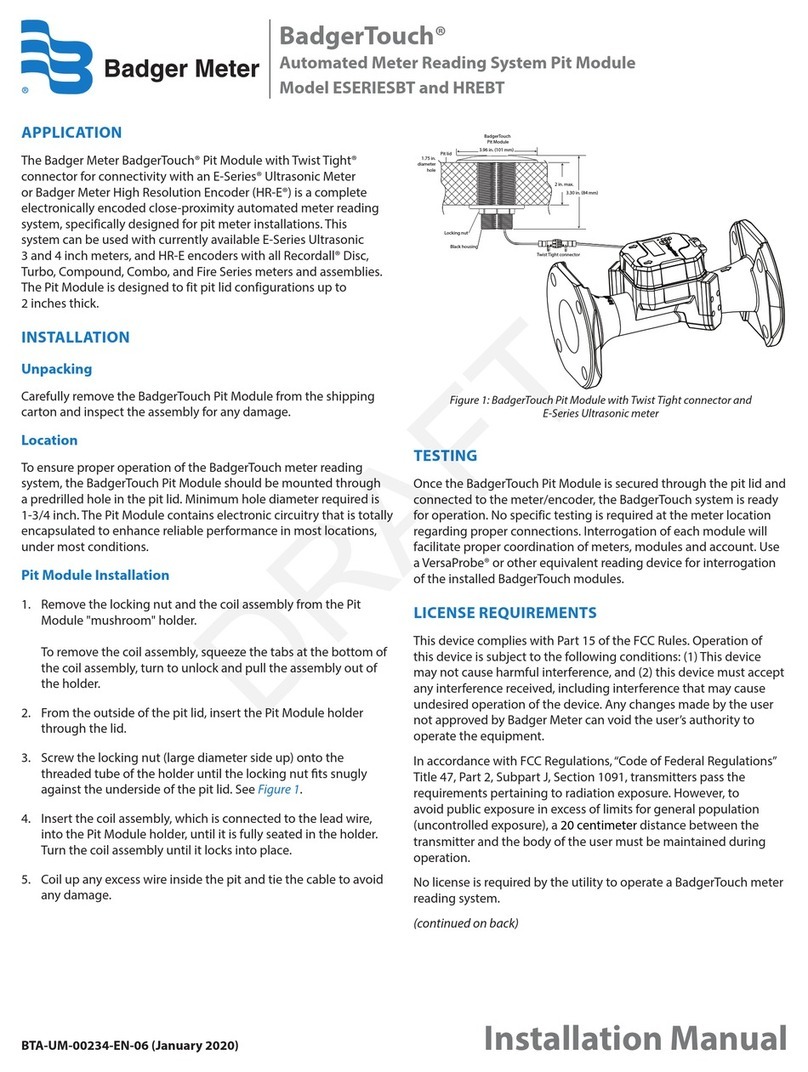
Badger Meter
Badger Meter BadgerTouch HREBT installation manual
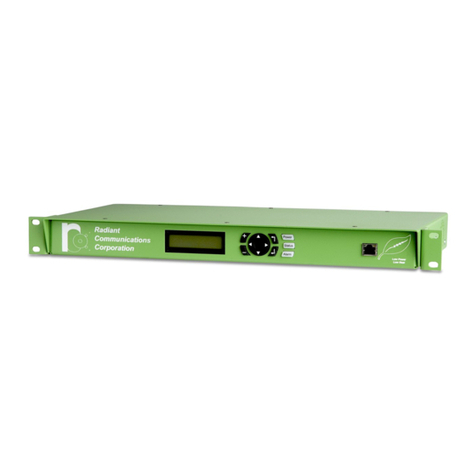
Radiant Communications
Radiant Communications RM1121 user manual
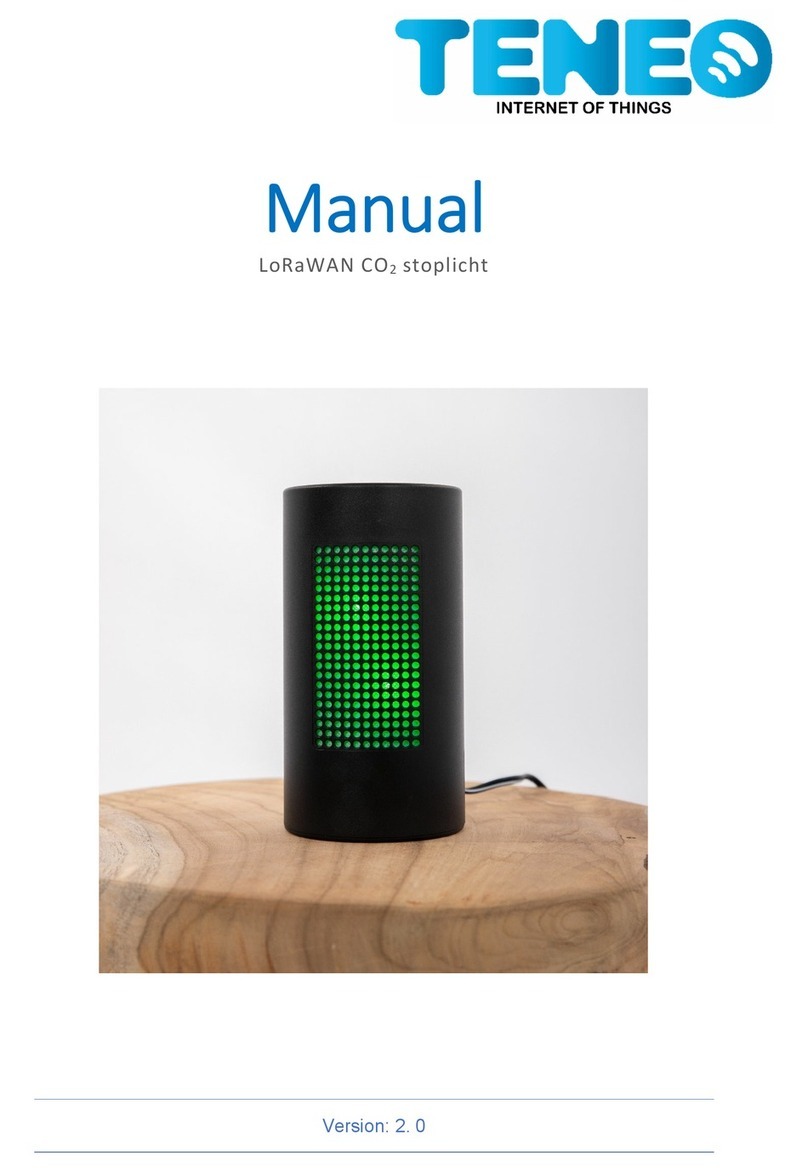
TENEO
TENEO LoRaWAN CO2 stoplicht manual
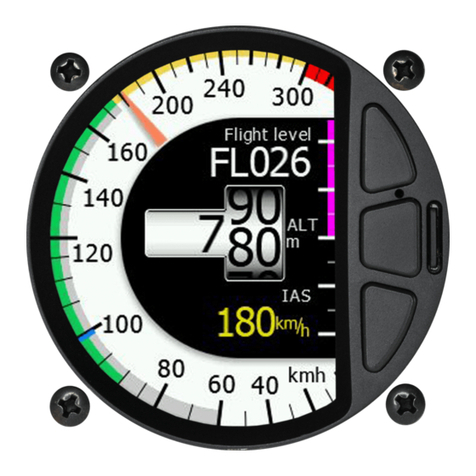
LXNAV
LXNAV Airdata indicator user manual

Ametek
Ametek JOFRA DTI050 A Reference manual
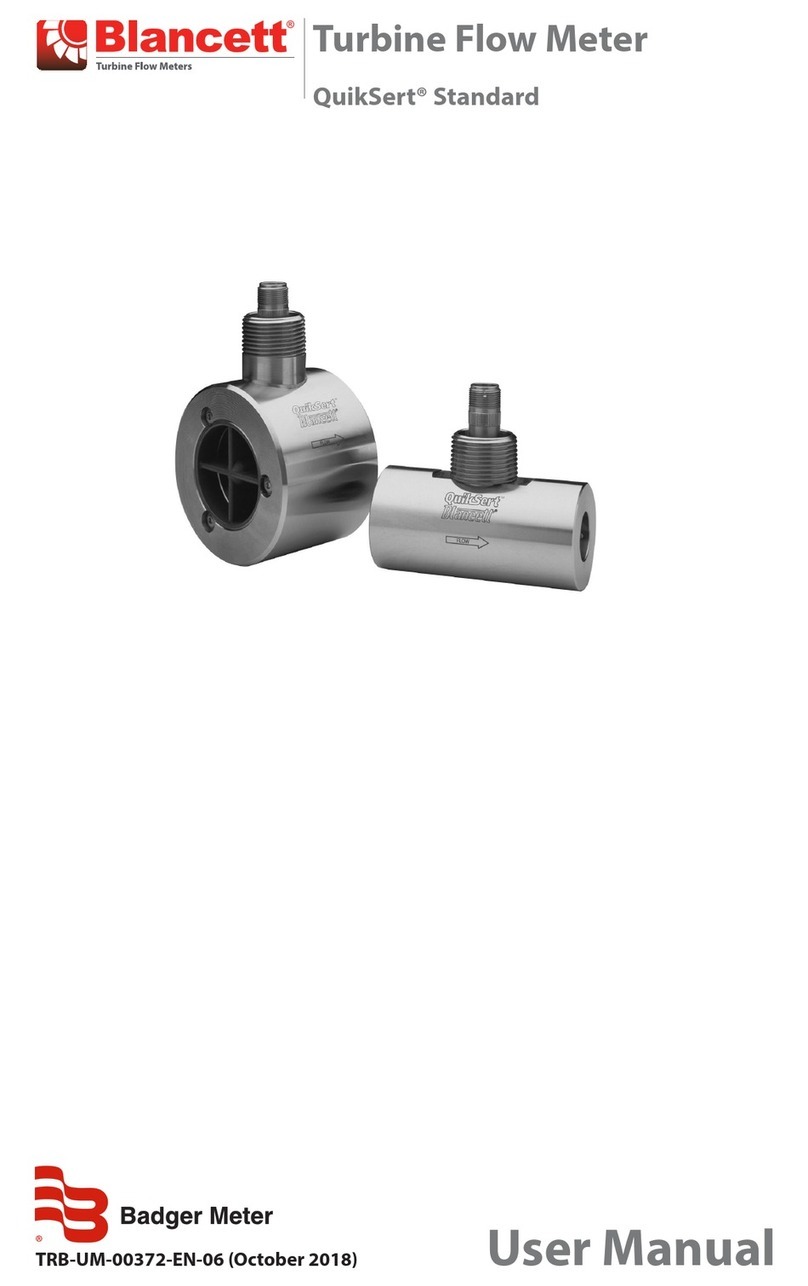
Badger Meter
Badger Meter QuikSert Standard user manual
